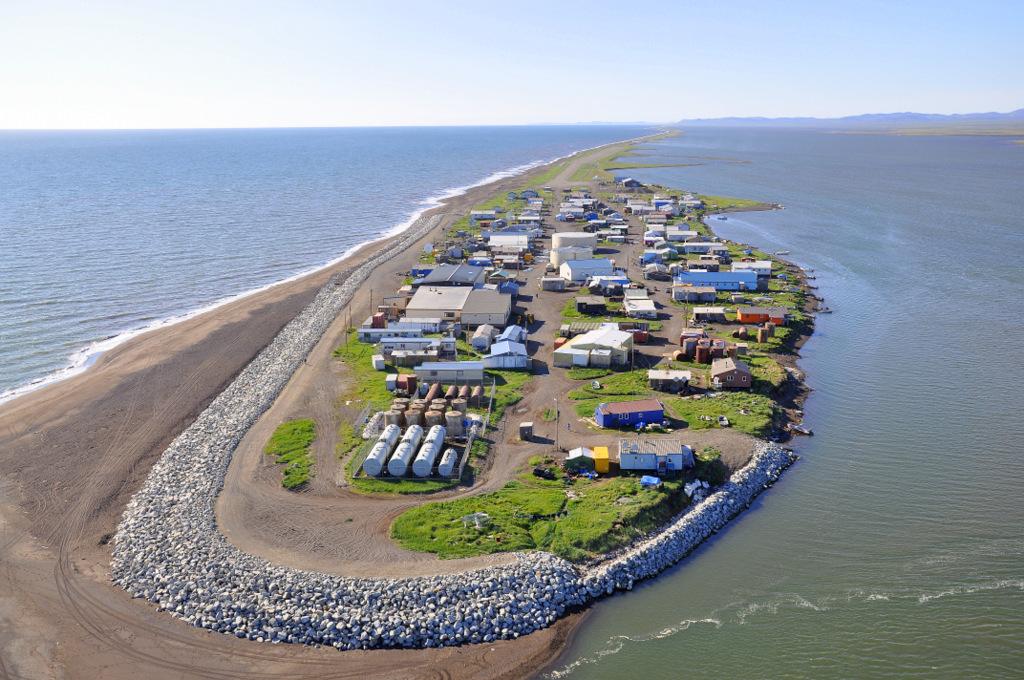
Here at TriplePundit, we’ve long been tracking the disruptive impacts that climate change could have on coastal communities here in the U.S. Now, the private sector could be inspired by the latest round of private-public partnerships focused on the need to further secure resilience in communities most at risk. As a reminder, resilience can best be defined as the ability to bounce back when the worst happens; to that end, these grants are designed to help ensure that the most remote villages and largest cities can do so.
Last week, the National Oceanic and Atmospheric Administration (NOAA), National Fish and Wildlife Foundation (NFWF), Shell and TransRe announced $30 million in grants for coastal resilience projects in 23 U.S. states and territories. The 44 grants, which by and large have received bipartisan support, will generate an additional $60 million in matching funds, a significant amount for projects such as restoring or expanding coastal marshes, wetlands, dune systems, mangroves, and barrier islands, all important components to creating more resilient communities along the country’s coasts.
The list of recipient states and territories includes many that are familiar from recent storm damage stories: Puerto Rico, Louisiana, Texas, Florida and the Carolinas. Other communities along both the west and east coasts will also receive grants. A few of these grants, however, warrant a closer look because they highlight some important resilience issues.
Alaska and resilient indigenous communities
Two grants will go to the indigenous Alaskan communities of Point Hope and Shaktoolik, both of which are facing extreme challenges from climate change. Decades of fossil fuel extraction coupled with the impacts of warmer winters and rising seas are having a direct impact on these communities.
No one is more at risk than the indigenous communities living in Alaska’s coastal towns and villages. Alaska has already seen some of the first American climate refugees. The 400-person town of Kivalina (shown in the photo above) and neighboring 350-strong Newtok (which 3p covered back in 2014), home to Inupiat and Yupik people, respectively, needed to be moved because, according to then-U.S. Secretary of Interior Sally Jewell, they are “washing away.” The monetary costs are estimated at $100 to $200 million per village (and 29 more of these communities are listed as in imminent danger), but the cultural and social costs to the families that must be uprooted from their homes is immeasurable.
The Point Hope grant will provide funds to survey what the greater need is to bolster the natural infrastructure of that community. It specifies that native knowledge and expertise will be used in the determination of the best potential shoreline sites. The second grant will fund the building of a storm surge berm (similar in concept to what has been proposed for New York City) between the village of Shaktoolik and the Bering Sea that will use nature-based local materials to restore the coastal dune habitat.
Midwestern coastal resilience
When people talk about coastal resilience, they usually do not consider the the internal coasts along the Great Lakes. But these waterways are under severe pressure from climate change. According to the latest National Climate Assessment, the Great Lakes are facing a dire future, with Lake Erie topping the list of concern. Two of the three grants included in this round address needs on Lake Erie: one to restore a marsh and shrub-scrub peninsula in Michigan and one to undertake a resilience study in the eastern embayment in Cleveland Harbor in Ohio.
Climate change is already having an effect on the Great Lakes region, from lower lake levels and flooding to increased harmful algal blooms. More extreme weather events are threatening fish and wildlife as well as shipping, tourism, and recreation, not to mention the communities built along the shores of all of the Great Lakes. The government and its partners in the private sector that are funding efforts to improve resilience in these inland coastal communities together show a clear indication that the the scientific community sees this region as a target for coastal resilience.
Front-line climate change impacts require the greatest attention
Many coastal communities are already feeling the effects of climate change. Slowing or reversing its forward march is imperative, but it is also critical to improve the resilience of these regions to ensure their health and survival. After all, they are at the front lines. It is no coincidence that one of the partners in this group of funders is the reinsurance company TransRe, as it clearly understands the importance that effective planning for resilience has in reducing long-term financial risks.
“Coastal resilience is vital to the lives of millions of Americans,” said Mike Sapnar, TransRe’s President and CEO, in a public statement. “We applaud the progress already made by last year’s award recipients. This year’s projects are equally deserving, and we are pleased to support their important work.”
Image credit: Wiki Commons

Kate is a writer and policy wonk, with a focus on water, clean energy, climate change and environmental security. She spent over a decade running energy-water nexus and energy efficiency programs at Environmental Defense Fund as well as time at the U.S. Departments of Energy and Defense, U.S. Government Accountability Office, and state and federal legislatures. She serves as an Advisory Board member of CleanTX, which aims to accelerate the growth of the clean tech industry in Texas.














